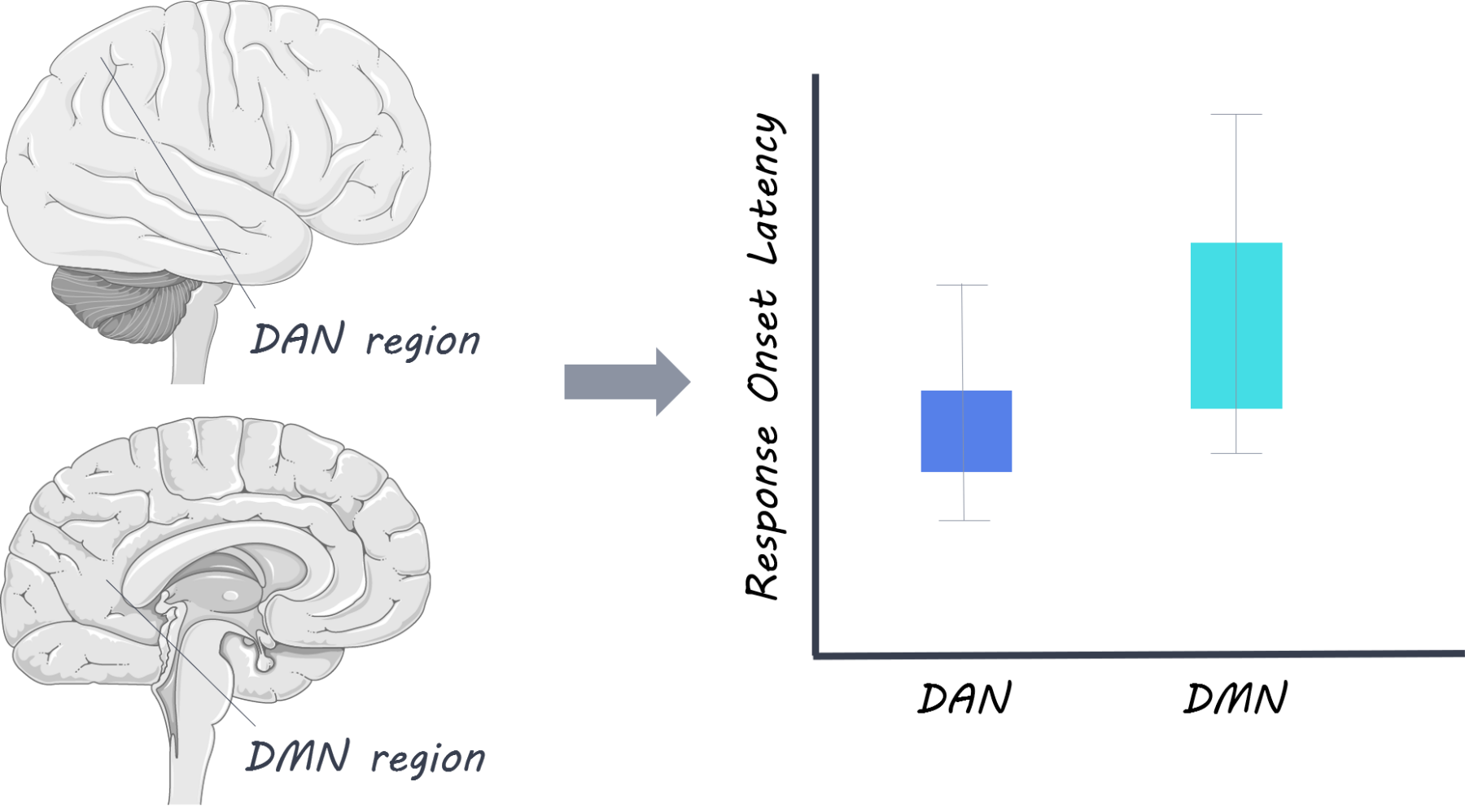Internal Versus External Processing: How Do Our Brains Make the Switch?
Post by Anastasia Sares
What's the science?
The “default-mode” network is a brain network which is more active at rest than during attention-demanding tasks. It is also known to be involved in internally-directed brain processes, like daydreaming or thinking about past experiences. Another brain network called the dorsal attention network is ‘anti-correlated’ with the default mode network; that is, it tends to be active when the default mode network is not, and vice versa. However, since most of the research on these networks is done using functional MRI (which is not the most temporally precise brain imaging method) the exact timing of activation of these networks remains uncertain: does the default mode deactivate before the dorsal attention network comes online, or after? This week in The Journal of Neuroscience, Raccah and colleagues used intracranial electrical recordings to find out when different networks become active, and whether certain network changes precede others in time.
How did they do it?
This study made use of intracranial recordings, a method using electrodes implanted directly on the surface of the brain, to record activity. These recordings only happen when a patient already has the electrodes in place because they are about have brain surgery (in most cases, surgery for epilepsy). The signal from the electrodes corresponds to the firing of many neurons (in this case, high-frequency broadband power was measured). The authors enrolled six epileptic patients who had electrodes covering parts of the default mode network (DMN) and the dorsal attention network (DAN), so they could track the activation of both network simultaneously. They administered a task in which participants were required to answer “True” or “False” to memory questions (like “I ate fruit yesterday”) and math questions (like “48 + 9 = 57”). Since memory questions activate internally-focused processing, and math questions activate networks for outward attention and problem-solving, the questions were assumed to tap into the DMN and DAN respectively. After discarding the signal from bad electrodes, the authors identified some electrodes that responded preferentially to the math or memory questions, some that responded to both, and some that deactivated while answering math questions. They compared the timing of electrode responses to the True-False questions, noting when they began to respond and when the electrodes reached their peak activity.
What did they find?
Even though participants took longer to respond to the math questions, the neurons in the DAN responded much more quickly than other neurons. The time to peak neuron firing for the dorsal attention network was around 450-500 milliseconds after seeing the True-False question, while the DMN seemed to reach its peak around 650-800 milliseconds after seeing the question. These results show that the DAN becomes active prior to any response from the DMN. This pattern was replicated in both the onset of the response and the peak of the response. The results suggest that the DAN activation precedes the DMN deactivation in time.
What's the impact?
This study found that changes in the DMN occur after changes in the DAN using intracranial recordings, which are more temporally precise than functional MRI. This means that activity in the DMN (which drives internally driven processes) does not cause activity in the DAN, but the reverse may be true. These results suggest that your internally focused brain network decreases in activity as you pay attention. Understanding the role of the DMN will be crucial for understanding how it can affect cognitive function, and disorders of cognition.
Raccah et al. Direct Cortical Recordings Suggest Temporal Order of Task Evoked Responses in Human Dorsal Attention and Default Networks.The Journal of Neuroscience (2018). Access the original scientific publication here


